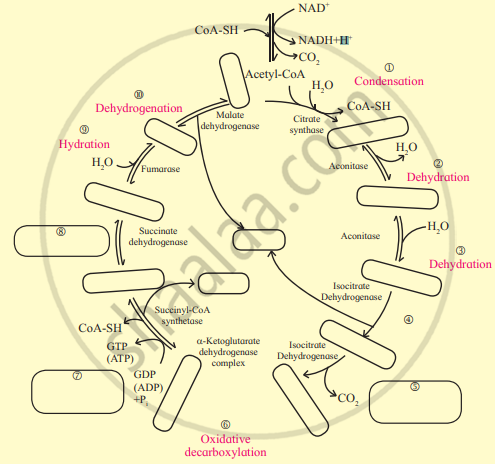Advertisements
Advertisements
Question
Differentiate between aerobic and anaerobic respiration.
Solution
| Sr. No. | Aerobic respiration | Anaerobic respiration |
| 1. | It occurs in the presence of oxygen. | It occurs in the absence of oxygen. |
| 2. | Here there is a complete breakdown of glucose releasing carbon-di-oxide, water and energy. | There is a partial breakdown of glucose into ethyl alcohol and carbon-di-oxide |
| 3. | More energy is released (38 ATP). | Lesser energy is released (2 ATP). |
| 4. | Aerobic respiration consists of three steps - glycolysis, krebs cycle and terminal oxidation. | Anaerobic respiration consist of two steps - glycolysis and incomplete break down of pyruvic acid. |
| 5. | Aerobic respiration involved electron transport system. | Electron transport system is absent. |
APPEARS IN
RELATED QUESTIONS
Give the schematic representation of an overall view of Krebs' cycle.
Complete the following statement by choosing the correct alternative out of those given below.
In respiration, energy is released in
Name the following:
The products formed as a result of aerobic respiration.
The question has four options. Choose the correct answer:
Where does glycolysis take place?
Answer the following question.
Which of the following step of aerobic respiration would be omitted when fatty acids are used as respiratory substrate?
Identify the cycle given below. Correct it and fill in the blanks and write discription of it in your own words.

Out of 38 ATP molecules formed in aerobic respiration, the number of ATPs formed outside mitochondria is ______
____________ ATPs will be effectively produced during the production of 1 molecule of acetyl-CoA from 1 molecule of pyruvic acid.
Match the Column I (ETS Complex) to Column II (Characteristic) and select the correct option.
| Column I | Column II | ||
| i. | Complex I | a. | Succinate dehydrogenase |
| ii. | Complex II | b. | Cytochrome oxidase |
| iii. | Complex III | c. | NADH dehydrogenase |
| iv. | Complex IV | d. | Cytochrom bc1 complex |
